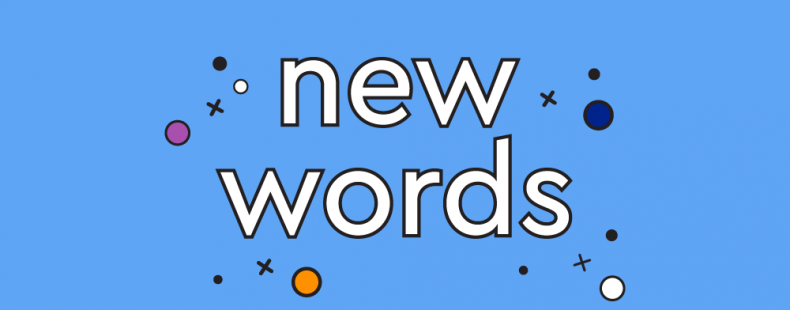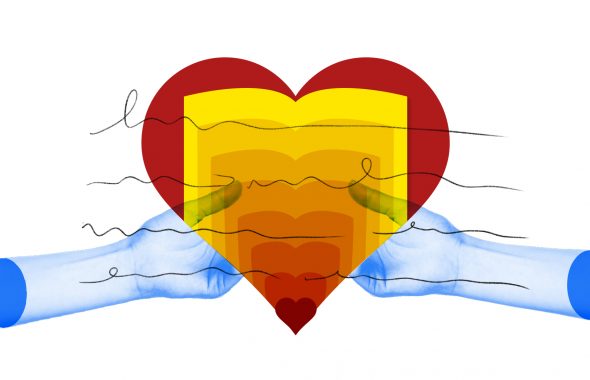by Heather Bonikowski, Lexicographer, and John Kelly, Managing Editor
The latest update to Dictionary.com mirrors, as ever, the world around us.
It reflects the evolving landscape—and language—of COVID-19, racial reckoning, social struggles, and the unstoppable charge of technological change.
But it also reveals our boundless creativity and ingenuity. Slang and pop culture have yielded a host of terms and expressions in this update—and some welcome fun after a trying past year.
On the heels of our spring 2021 update, our indefatigable crew of lexicographers have touched over 1,200 entries, including:
✅ 231 new entries
✅ 65 new definitions in existing entries
✅ 925 revised definitions
Across Dictionary.com and Thesaurus.com, our mission is not only to stay on top of a restless English language by documenting and defining its changing vocabulary. From informative usage notes to in-depth articles to our Grammar Coach™ and Dictionary Academy™, we also strive to educate on why and how language changes—changes we know can be challenging. And as always, we like to make learning fun while we’re at it.
Jump right into our quiz on our new words and definitions if you’re ready!
Continuing COVID coverage
While the pandemic is no longer always top of our national mind and headlines (even as we remain vigilant about its variants), its impact on our lives, and language, is long-lasting—and literally so.
Long COVID now has an entry in the dictionary. And the realities and experiences of this condition prompted a new entry for long hauler in tandem with an overhaul to our definitions at long haul to account for their expanded, pathological senses.
A long hauler (or long-hauler) is:
a person who experiences symptoms or health problems that linger or first appear after supposed recovery from an associated acute illness or active infection.
COVID also contributed to changes to the very DNA—or RNA—of the word virus. Previously, our second sense of virus, “a viral disease,” was labeled as informal.
The removal of the register label informal may seem small, but it’s significant. Technically, a virus is the agent that causes an illness, not the illness. However, it’s now widespread and accepted, although medically imprecise, to use virus to refer to the viral disease it causes. This usage became especially noticeable and prevalent in the language during COVID-19.
Read more about words related to the coronavirus that we added in the past year.
Reckoning with racial justice, past and present
Protests following the murder of George Floyd in May 2020 brought heightened urgency to the nation’s grappling with racism and racial injustice. Since then, this reckoning has expanded from street demonstrations to board meetings, and we continue to track its ever-evolving vocabulary in real time.
Growing awareness of inequality, inequity, and their deeper causes has spurred many organizations and corporations to invest in initiatives to counter them in the workplace. These efforts are commonly referred to by two increasingly familiar—and newly added—initialisms:
Some major products rebranded following criticism and review of the racist stereotypes their original names evoked. Two such changes are now reflected in our dictionary: Edy’s Pie (formerly Eskimo Pie) and Aunt Jemima (now called Pearl Milling Company).
Note: Aunt Jemima is a disparaging and offensive term. Please review our usage note at the end of this entry for more context.
Marginalized vs. minoritized
Another notable development in the language of racial justice centers on the distinction between the terms marginalize and minoritize, the latter of which is newly defined on Dictionary.com.
A person or group that has been marginalized (“placed in a position of little or no importance, influence, or power”) can also be minoritized. That is, more powerful, dominant groups or people can assign or enforce minority status to less powerful ones—regardless of whether or not those effectively minoritized people make up a numerical minority.
This crucial, if subtle, innovation in terminology encourages people to consider membership in minority groups not as something intrinsic or unchangeable, but as socially constructed—as a reality created and maintained by one group and experienced by another.
In a similar vein, we also updated our entry for cultural appropriation to reflect that it does not exclusively—although it frequently does—involve taking cultural identity markers from minority groups. Cultural appropriation can also involve mainstream adoption of cultural elements from any smaller group, including from subcultures within dominant groups.
A legacy, and language, of oppression
As society wrestles with racial injustice in the present, it also is confronting racial injustice in the past. In this moment, many people have been learning for the first time about the Black Codes and Jim Crow, and we have updated these definitions. Connected to this history are painful questions of racial identity involving what is known as the one-drop rule, which we’ve added to our dictionary.
The one-drop rule refers to “a social classification, codified in law in some states during the 20th century, that identifies biracial or multiracial individuals as Black if they have any known Black African ancestry, even from a Black ancestor many generations removed.”
The one-drop rule is sometimes regarded as a form of hypodescent, an academic term and social theory also newly added. It means “the classifying or identifying of a biracial or multiracial individual as a member of the lower or lowest socially ranking racial group from which that person has ancestry.”
These terms continue to resonate and evolve in an increasingly multiracial population. And long after they were last officially observed in state laws, these practices still have complex ramifications for identity and group memberships today.
Content warning: this section discusses topics of violence
Incidents involving attackers targeting members of racial and ethnic groups continue to beset the US, and intelligence agencies and law enforcement officials have been increasingly assessing them as forms of domestic terrorism, which has warranted its own dictionary entry.
Domestic terrorism is defined as:
the unlawful use of violence or threats against a country’s civilian population or government by an individual or group based and operating within the same country and without foreign direction, with the goal of furthering political, social, or ideological objectives.
Defining the word terrorism is complicated, so we’ve provided a new usage note at that term for additional context. We’ve also expanded the definition of terrorism to include its broader senses of “intimidation or coercion by instilling fear.”
These are difficult topics—and for many, traumatizing. More and more, various forms of media alert users to upsetting or offensive content with a content warning, or CW for short. Both of these terms, along with a new entry for the abbreviation TW for the related trigger warning, are now on Dictionary.com.
Keeping up with tech
Technology—always and inevitably—introduces new words into the mainstream lexicon. Two highlights in this update were inspired by how the pandemic transformed work and school: asynchronous and synchronous.
To these entries, we’ve added two key new senses, both of which are especially used in the context of remote, hybrid, or blended learning:
- asynchronous: occurring or able to be completed independently according to a person’s own self-paced schedule or within a broad window of time, but not coordinated to be completed in real time with another participant.
- synchronous: occurring in real time, as with participants logged in at an appointed time for a live lecture or discussion.
The verb deprecate and adjective deprecated are both new and supported in our dictionary in the more specific senses related to “older” and “unsupported” versions of software or other computer features and elements. A related concept is abandonware, another new entrant.
A different kind of loss of support is the recently prominent—and at times controversial—social media phenomenon of deplatforming. A new entry this summer, deplatform means:
to prohibit (a person or people) from sharing their views in a public forum, especially by banning a user from posting on a social media website or application.
And while it has become embroiled in some troubling conspiracy theories, 5G (short for fifth–generation) is now a widespread digital telecommunications technology—and a headword in the dictionary.
Slang and pop culture are no mere side hustles
As we’ve seen, language changes in important ways as people grapple with everything from world-historic events of the pandemic to urgent social issues of racial justice.
But sometimes, language change is, well, just fun. After a challenging 2020, we think we can certainly make room for some language play.
Now, just in case our addition of yeet in 2021 makes you go oof, trends in slang and pop culture are so often fast-changing and short-lived, and new words only typically make it into the dictionary after our editors see meaningful evidence for their sustained, widespread use in the language. Here are some recent terms that made the cut.
English let off a little steam with expressive formations like oof, blamestorm, and, yes, one of our People’s Choice Words of the Year for 2020, sh*tshow.
And let’s give credit where credit is due:
We can thank Black social media for the fun—and multifunctional—smash slang hit of yeet, variously used as a joyful interjection or verb for forms of quick, forceful motions.
We can thank artist Ty Dolla $ign for popularizing the zesty zaddy, an alteration of daddy that means “an attractive man who is also stylish, charming, and self-confident.”
And we can thank the realities of modern life for terms like side hustle and ghost kitchen. Additional entries drawn from the wide world of slang and popular culture include:
A y’all for us all
Listen up, y’all: after years of treating y’all as a variant form of you-all, we can now, finally, celebrate this vital pronoun in its very own entry.
Long connected to Southern American English and Black English, y’all has been on the move, spreading in dialectal distribution since the late 1990s, and growing more quickly with younger demographics than older ones.
Today, y’all is less strictly perceived as dialectal (that is, part of a distinct regional variety of a language, and often disparaged as substandard). Y’all is also now used to convey an informal tone more than regional identity.
And while you guys and y’all competed to be the dominant second-person plural form for many years (with you guys preferred for a period because it was free of regional associations), y’all has new popularity among former you guys users, who now appreciate the lack of gender associations with y’all.
Other forms of the second-person pronoun retain strong regional identities, and we celebrate these, too, with updated entries for youse and you-uns.
More than new words
A changing world means a changing language, and a changing language means a changing dictionary—and that comes in many more forms than just new words.
We are dedicated to providing rich, engaging, and meaningful ways to experience and become experts in words and writing for your own changing language needs. And through these ways, we hope to inspire a love of language and learning as a constant throughout our life.
Grammar Coach™: Our AI-backed writing tool helps writers of all kinds produce high-quality, error-free work. From grammar corrections to Thesaurus-powered synonym suggestions, Grammar Coach™ ensures every essay, email, and application letter is perfectly written.
Y’all come back now.














